Table of Contents
What Is Truss Bridge?
A truss bridge is a strong and durable bridge made up of connected triangles. These triangles help distribute weight and handle different types of stress. Truss bridges have been used for a long time and can be made of materials like steel, iron, or wood. They have different designs, but the basic idea is to have triangular sections along the bridge.
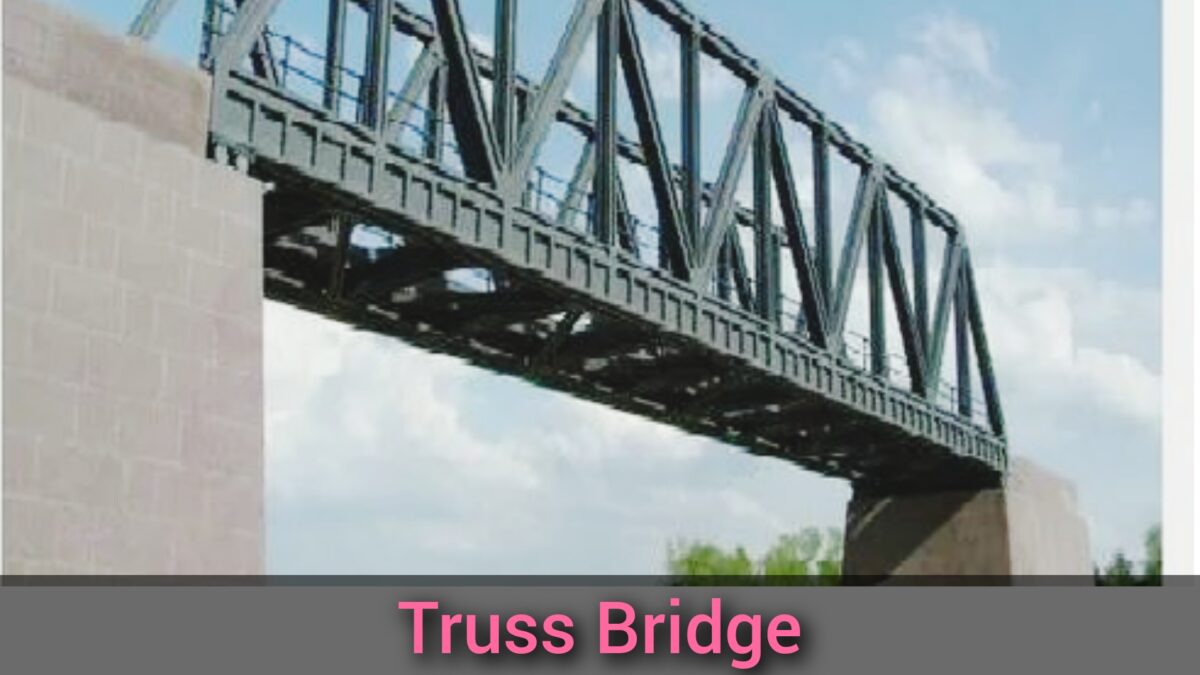
The important parts of a truss bridge are the top and bottom horizontal members and the diagonal and vertical members that connect them. These parts work together to support the weight of the bridge and transfer it to the supports on each end.
Truss bridges have many benefits. The triangular design allows them to handle loads and handle different stresses well, making them strong and stable. They are also cheaper to build compared to other bridges because they use materials efficiently. The simple design of truss bridges also makes them easier to analyze and build.
Truss bridges are commonly used to cross rivers, canyons, and other bodies of water. They are also used in building roads and railways because they are a cost-effective solution for spanning long distances.
Types Of Truss Bridges
Here is the list of types of truss bridges.
- Warren Truss
- Pratt Truss
- Howe Truss
- Parker Truss
- K-Truss
- Bowstring Truss
- Lattice Truss
I will describe these 7 types of truss bridges in detail.
Let’s know!
1. Warren Truss:
The Warren truss is a strong and commonly used bridge design. It consists of diagonal lines that form triangles.
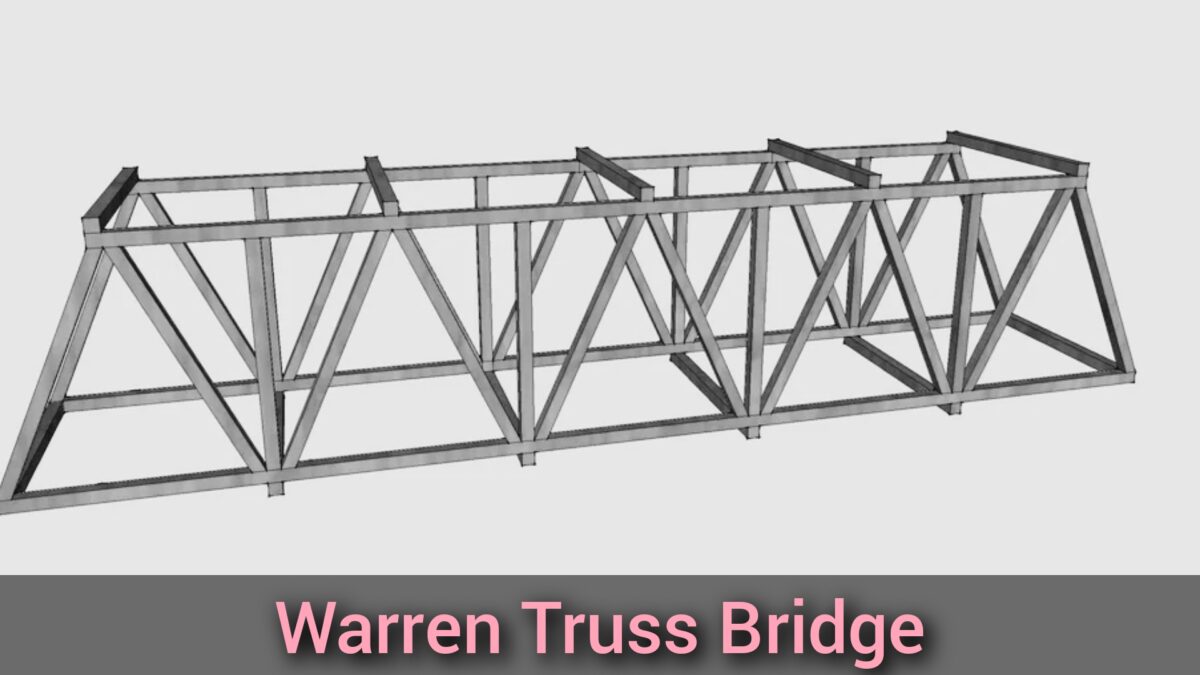
These triangles help distribute the weight of the bridge evenly across its structure. Warren truss bridges are often used for medium-sized bridges because they can handle a good amount of weight.
2. Pratt Truss:
The Pratt truss is another strong bridge design. It has vertical lines and diagonal lines that create a series of rectangles.
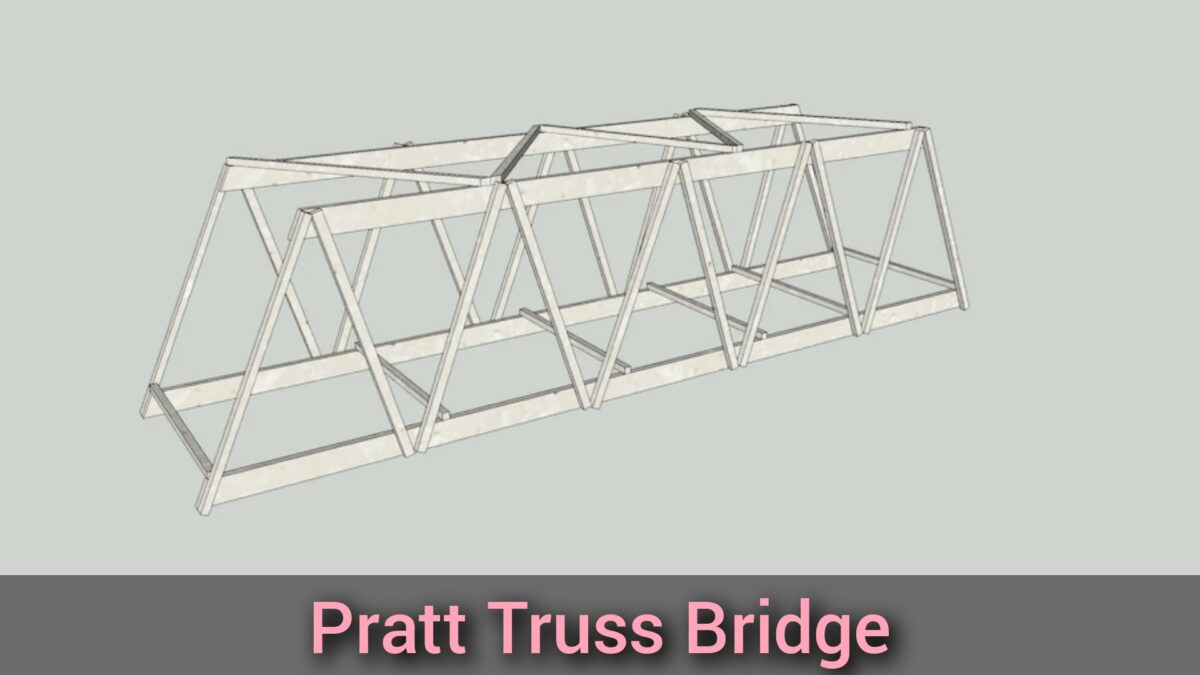
The diagonal braces slope towards the center of the bridge. Pratt truss bridges are known for their stability and are used for medium to long bridges. The rectangles formed by the braces and posts help support the weight of the bridge.
3. Howe Truss:
The Howe truss is similar to the Pratt truss but with diagonal braces that slope in the opposite direction, away from the center of the bridge.
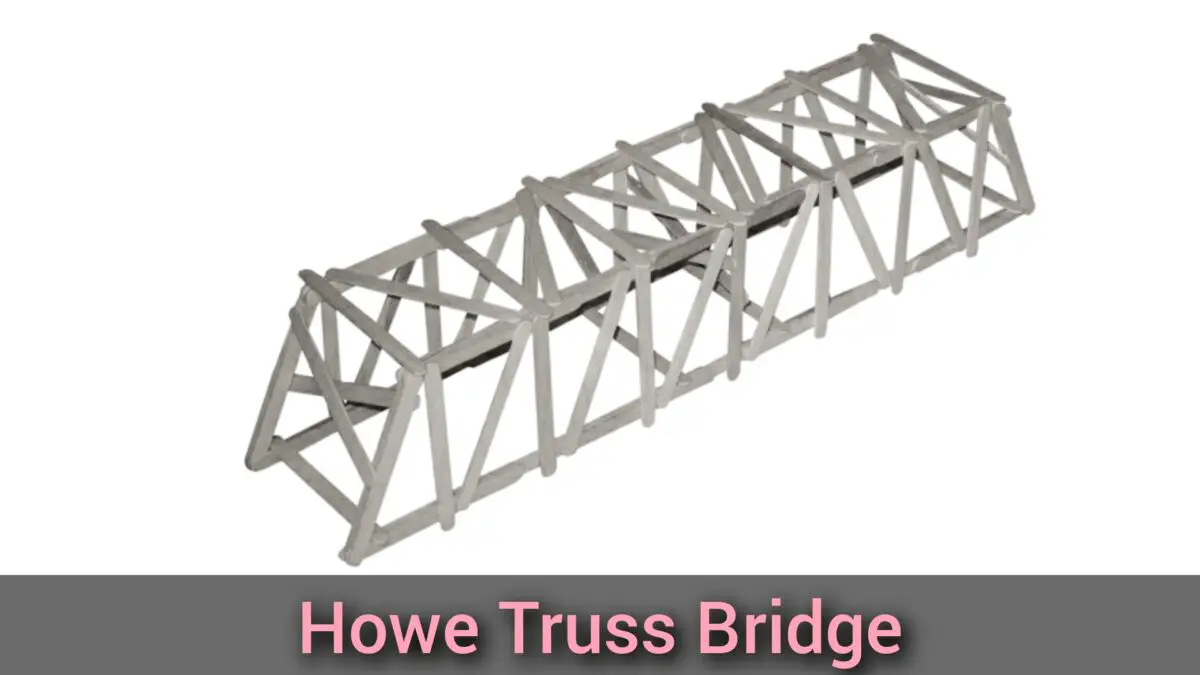
This design provides flexibility and versatility in bridge construction. Howe truss bridges can be used for both short and medium-sized bridges. The diagonal braces help distribute the weight and keep the bridge sturdy.
4. Parker Truss:
The Parker truss, also known as the Camelback truss, has a unique curved top chord that resembles a camel’s hump. It features a combination of diagonal and vertical members, which form a series of arches.
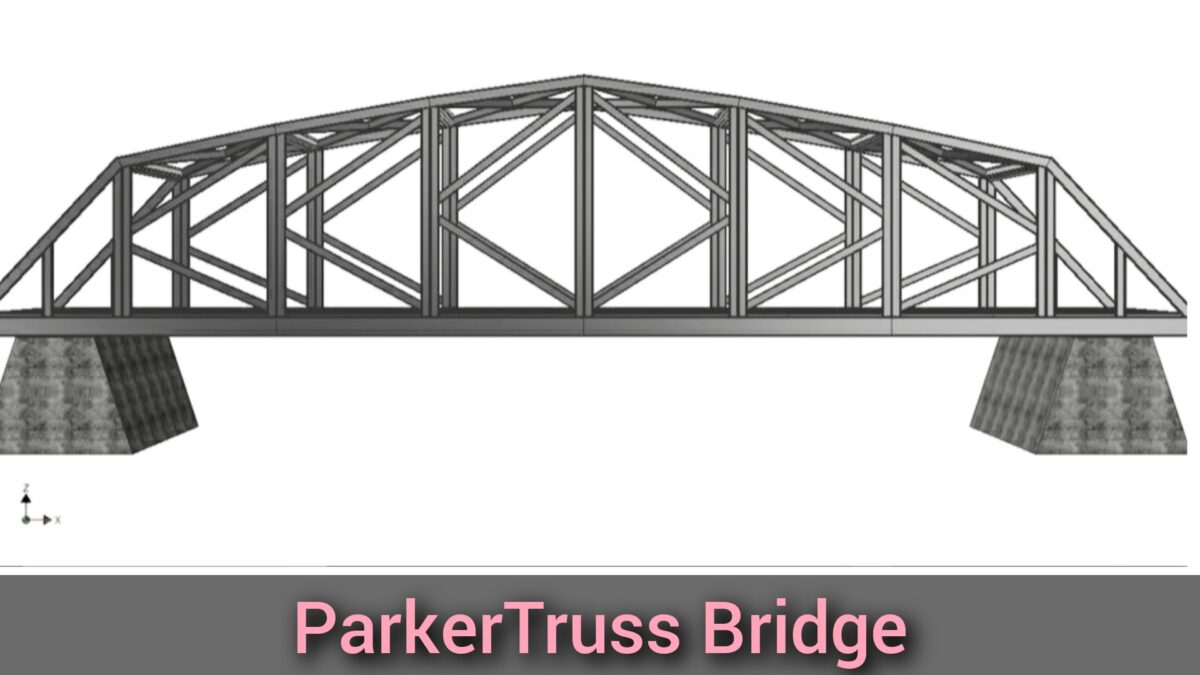
The curved shape of the top chord provides extra strength and allows the bridge to span longer distances. Parker truss bridges are often used for longer-span bridges where a greater load needs to be supported.
5. K-Truss:
The K-truss is a modified version of the Pratt truss. It gets its name from the additional diagonal members that create a “K” shape within each panel.

These extra diagonals increase the strength and rigidity of the bridge, making it suitable for longer spans. K-truss bridges are designed to withstand heavy loads and provide stability.
6. Bowstring Truss:
The bowstring truss gets its name because its top chord has a curved shape that looks like a bow and string. The curved top chord is supported by vertical hangers that hold the bridge deck.

Bowstring truss bridges were popular in the past but are now mostly found in historic or decorative bridges. They have an elegant appearance and are known for their unique design.
7. Lattice Truss:
The lattice truss is characterized by an intricate pattern of crisscrossing diagonal and vertical members, forming a lattice or web-like structure. This design creates a strong and stable bridge that can handle heavy loads.
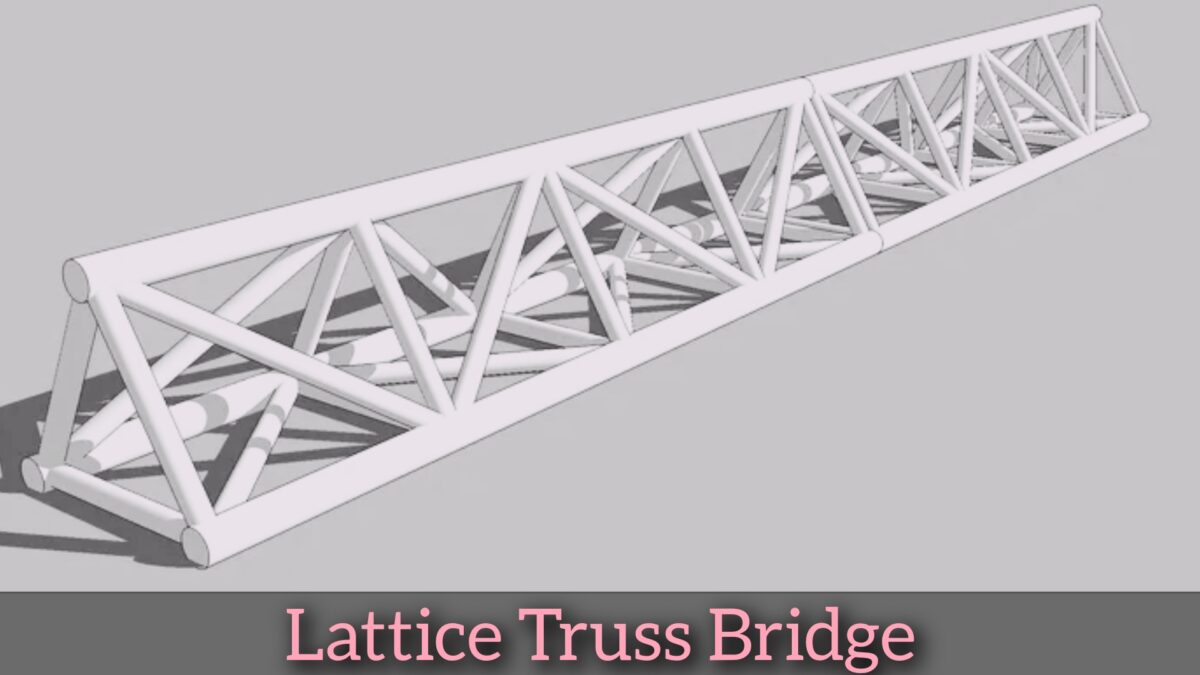
Lattice truss bridges are versatile and can be used for both short and long spans. The diagonal and vertical members work together to distribute the weight and provide support throughout the bridge structure.
Uses And Applications
Truss bridges are commonly employed for road and highway applications, particularly in areas where spans need to cover long distances. The inherent strength and rigidity of truss structures allow for the construction of bridges capable of withstanding heavy vehicle loads. Truss bridges are often used in rural or mountainous regions, where the terrain requires long spans to cross valleys, rivers, or canyons. Their design can accommodate various deck configurations, including concrete, steel, or timber, making them adaptable to different geographical and transportation requirements.
Truss bridges have been extensively utilized in the railway industry due to their ability to support the considerable weight of trains and withstand dynamic loads. The use of truss designs in railroad bridges allows for longer spans between piers, reducing the number of support structures required. This design efficiency is crucial for maintaining uninterrupted railway tracks over large distances and minimizing the disruption caused by the installation of support structures. Truss bridges are especially common in areas with complex topography or where the railway line needs to traverse rivers or valleys.
Truss bridges are also employed for pedestrian walkways, bike paths, and other light load applications. Their lightweight and modular design make them cost-effective and easy to construct, especially for shorter spans. Truss bridges provide safe and stable crossings for pedestrians and cyclists while maintaining an aesthetically pleasing appearance.
They are often used in urban environments, parks, and recreational areas, where the focus is on creating functional and visually appealing structures that blend well with the surroundings.
